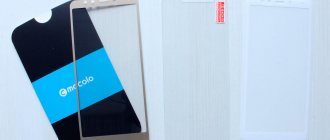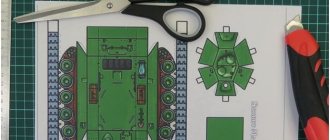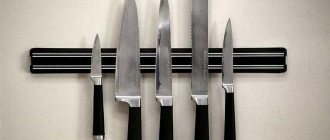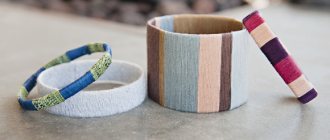The larger the cell phone screen, the higher the chance of damage. Scratches, grease stains, dust are constant companions of large diagonal screens. Protective film will help extend the life of your cell phone or tablet display and preserve its appearance. It is not difficult to glue it with your own hands, even without experience.
phone protective film
Preparing your phone
Remove unnecessary objects from the table, move away the table lamp and other potential sources of dust. Turn off the phone, remove the battery if possible, and replace the back cover. Wipe the screen and body of the phone with a dry cloth; paper napkins leave cellulose particles. Use a mild soap solution to remove grease stains and remaining dust from the phone screen. Place the phone on the table.
phone preparation
Which shockproof accessory is best?
Tempered glass has one main advantage over all types of films - impact resistance. Although it may break upon impact, the screen will remain intact.
However, not all types of glass cover the screen 100%, which does not guarantee the safety of the display.
If the impact falls on an unprotected area, the glass will remain intact, but the screen will be damaged. The hydrogel film also does not completely cover the screen, but if it breaks, it will keep it from falling apart.
The hydrogel protective accessory has innovative qualities, so it is difficult for ordinary films and glasses to compete with it.
So, even with prolonged use, it does not peel off at the edges, the service life is much longer, and the ability to regenerate (self-heal) completely knocks out competitors. They simply do not have this property.
When gluing the hydrogel film, virtually no bubbles are formed. And if they do appear, they can be eliminated by simply lifting the film. The same cannot be said about the usual accessories. For them, the problem remains relevant.
Standard protective films for phones are in many ways inferior to hydrogel ones, so you shouldn’t choose them.
Method using tape
Remove the film from the packaging. Without removing the protective layers, apply it to the phone screen. Align exactly with the speaker holes and buttons. Using wide tape, glue one side of the film to the side of the phone body. It is better to choose the right side, it has fewer buttons. As a result, the film should open like a book cover.
Check again that the film matches the contours of the screen and buttons accurately. Check that there is no dust on your phone's display. Peel off the bottom layer of the protective film and place it on the screen, as in the photo.
Using a bank card, remove air bubbles by smoothing towards the edge of the screen. If you find dust particles under the film, take the stickers that came with the film. Glue one to the corner of the protective film, this will make it possible to carefully separate the film from the screen. Second, use the adhesive part to remove particles from the screen. Gently press the film. Remove air bubbles if necessary. Remove the top layer of protective film.
Types and characteristics of film coatings
In order to figure out how to stick a film on your phone, you should determine which type of film is most suitable for your device. Each manufacturer of smartphone protective film has its own special requirements for the properties and characteristics of protective coatings, which are especially relevant under specific operating conditions.
Types of protective films
There are several types of protective films for smartphones.
- Mirror . This option will appeal to the fair sex. It will not only reliably protect the touchscreen from any damage, but will also become a kind of mirror. However, you should be aware that it slightly reduces the brightness of the image. There may also be slight distortion in the color transfer process. Therefore, before choosing this option, it is important to remember that even the most minor damage to its surface will be especially visible.
- Glossy . This type is considered the most relevant and in demand. It provides high-quality image transmission and ensures high display sensitivity. But there are also disadvantages to this type - this is the softness of the product. If you use it to protect your smartphone, you will have to replace it often. We advise you not to carry your phone in your pocket along with your keys, otherwise after a few days you may notice minor damage to the cover.
- Matte . Applying a film to a phone does not involve any special difficulties. Moreover, it is considered the best method of protection for a smartphone. This material maintains the aesthetics of the device. If you managed to glue the film onto your mobile phone correctly, it will last for a long time. Among the disadvantages are a decrease in the brightness of colors and a slight distortion of the information displayed on the screen.
Now let's figure out how to properly stick a protective film on your phone so that it is guaranteed to cope with its functions for a long time.
Terms of use
The principle of using a smartphone with a protective coating is no different from using conventional devices. The same fast response to touch, no problems studying the data on the screen. All these indicators will not change in any way if you stick the film on the screen correctly. The covering is made of thin plastic and fits so tightly to the screen that it is not immediately noticeable.
Any type of coating must be glued to the glass carefully, without debris or bubbles. From time to time, film materials should be removed, washed and re-glued. This procedure can be performed at home. In this case, the main thing is to know where to stick the film on the phone to avoid small foreign particles. Therefore, before work, you should carefully prepare the room and all the necessary equipment and materials.
Method with soap solution
For this method you will need any spray bottle. A bottle of eau de toilette or perfume will do. Dilute a weak solution of dishwashing detergent in a pre-washed bottle. With the phone on the table, spray the screen with soapy water, avoiding any liquid getting into the speaker. Wipe the screen dry with a cloth. Make sure there is no dust on the display.
Apply a thin layer of soap solution again. Remove the bottom layer of the protective film and apply it to the screen. Align the holes for the speaker, camera, and buttons. Using a business card or bank card, gradually squeeze out the soap solution from under the protective film, holding it with your hand.
If dust gets under the film, peel it off the screen, remove the dust, apply a little soap solution again, and squeeze it out to the edges of the screen. The squeezed-out soap solution must be promptly removed with a dry cloth. After making sure that the film is installed correctly, remove its top layer.
How to apply protective film without bubbles at home
Smartphone manufacturers try to equip their products with high-quality scratch-resistant tempered glass screens, but it is not always possible to avoid them. Even Gorilla Glass or Asahi Dragontail are not always able to withstand some fractions of sand that have a high hardness on the Mohs scale. To ensure that the display does not become unsightly and remains clearly readable, you have to resort to the use of auxiliary accessories. How to stick a film on a phone at home without allowing bubbles to appear will help you find out the material.
How to choose a screen protector
Before you buy a protective film, you need to decide on its type. Both glossy and matte options are available on sale. The first ones are characterized by maximum transparency; the finger glides over them pleasantly, but a side effect is a tendency to glare. Matte ones are less transparent, but they protect against glare. Also a bonus is the reduction of matrix grain on low-resolution (below HD) screens.
The best smartphone under 5000 UAH: a selection of 10 interesting models
To choose a film, you need to set priorities and find out what is more important: maintaining brightness or protection from glare. In the first case, you should choose gloss, in the second, a matte surface. Also, when purchasing a universal film, you need to take into account the screen diagonal.
Preparation for gluing
Before you apply the universal film, you need to prepare it. To do this you will need the following tools and accessories:
The film preparation procedure is as follows:
After this, the film is ready for gluing. If the phone has contours that require a shaped cut (for example, Samsung, with an oval home button), but you don’t want to do them, you can simply cut the film straight so that it covers the display itself, but does not reach the keys under the screen.
How to apply protective film yourself
There are two ways to stick the film on your phone without bubbles: “dry” and “wet”. The first of them is fast and safe, but requires more skill. It also requires clean conditions without dust in the air. The “wet” method is fast, but can pose a threat to the smartphone in inexperienced hands.
Does a smartphone need an antivirus and how to avoid infectious software?
Dry method
Tools and accessories:
Often, screen film comes with these tools, so you don’t have to look for anything.
How to stick the film dry:
An experienced person (for example, a store or service center employee) can do without tools by gluing the film on the first try. But if this is done for the first time, it’s better to play it safe.
TOP 6 good smartphones with 2 SIM cards
Wet method
The wet method of gluing films was borrowed from car service technicians who tint auto glass. The peculiarity of this method is the use of water, which prevents the ingress of dust. Drops of moisture moisten and push out dirt, protecting against the formation of bubbles. It is suitable if it is not possible to provide clean working conditions. The advantage of this method is that it saves time.
Before applying bubble-free film to your phone using water, you should be aware of the responsibility. If your phone is not IP67 or IP68 certified, there is still a risk of water getting inside. The wet method requires the following tools:
How to stick the film on your phone yourself using the “wet” method:
Video instructions on how to stick film without bubbles using the wet method:
Sticker according to instructions
The method described in the instructions for the protective film suggests cleaning the phone screen. Make sure that the film matches its model by placing the film on the screen. Next, you need to separate part of the bottom layer of the protective film. Align it with the edge of the screen, and gradually separating the bottom layer, press the film against the screen. Use a business card to squeeze out any air bubbles. Remove top layer.
To glue the film in this way with your own hands, you need to have sufficient experience. It won't work the first time.
How to glue the loose corners of protective glass [edit]
Take a sugar cube and dissolve in two to three teaspoons of hot water. Make sure there are no hairs or specks under the peeled corner. If there are any, carefully pry up the glass and remove them, for example, using a toothpick. Next, you can use a toothpick again, drop a drop of sugar syrup under the corner of the glass and press it. Then we hold it for about five minutes, driving out the excess, and then we warm up the corner with a household hairdryer, pressing the glass tightly for 15 - 20 seconds.
In total, you need to wait 12 hours. The squeezed-out sugar mass tends to flow into all the cracks, you need to constantly soak up the excess with a napkin. The syrup does not spread evenly on the glass and tends to form droplets. The glass slides easily over the syrup and tends to move no matter how much you squeeze out. Due to the weak adhesive ability of the syrup in its raw form, you need to press the glass for a long time.
Universal film
It is not always possible to find a protective film for a specific phone or tablet model on sale. In this case, a universal film is suitable, from which you can cut the required size with your own hands. You will need:
- scissors or stationery knife;
- ruler;
- pencil;
- cardboard;
- cutting board or other hard surface.
Cut out a mock-up of the future film from a piece of cardboard. Pay attention to the coincidence of the corners of the screen, speakers, and buttons. Using a pencil, transfer the outlines onto the top layer of the protective film. Place the film on a hard surface. Using a ruler and a utility knife, carefully cut the film along the outline. Check if it matches your phone screen. You can glue using one of the above methods.
How to properly apply silicone protective film to your phone
The problem of how to stick a film on a phone without bubbles at home is a difficult task for the user. It must be positioned evenly to prevent air from appearing under the film. In the salon, the service is performed flawlessly, but it costs money. You may encounter a number of difficulties at home. To make the task easy to complete, follow certain rules.
Why do you need a film on your phone display?
The accessory has become popular since 2000, when touch screen mobile phones appeared on the market. Users doubt the advisability of applying a protective sticker, but experts point out its necessity.
Visually, it looks like a strip of thin plastic that matches the cutouts of the gadget - speaker, camera, function buttons. The exception is the universal option, where you need to cut out the correct shape yourself and fit it to the elements.
The high density allows you to compensate for the thickness, which guarantees protection. Before you properly stick a protective film on your phone, you need to know about its functions:
The accessory will not protect against impacts and severe damage; in this case, special glass will help, ensuring safety within the established limits.
What is needed to properly apply the film to the screen of a gadget?
It is within the power of any mobile phone owner to provide the device with proper protection. To glue silicone film with your own hands, you need to arm yourself with special tools (in some cases it can be easily replaced with improvised means):
Before gluing, the necessary tools should be placed on the table so that at the right time they are within easy reach.
The better to degrease the surface. What not to do
To degrease the surface of the display, you should use a special cloth from the kit (as a rule, microfiber is used for manufacturing).
If such a specially impregnated napkin is not available, then you can use alcohol, an alcohol solution, cologne or vodka. After degreasing, it is recommended to immediately wipe the iPhone with a lint-free cloth.
During this procedure, it is necessary that not a single speck of dust gets onto the device. Some do not recommend using alcohol for degreasing, but this substance is in no way capable of harming the touchscreen.
Preparing your phone
An important factor in the question of how to properly stick a protective film on a smartphone at home is the correct choice of room. The room (kitchen or bathroom is suitable) is wet cleaned - get rid of dust on all surfaces, wash the floor. You can spray water in the room from a spray bottle, it will force the dust to fall to the floor, and then simply wipe all surfaces.
It doesn’t hurt to change into clean clothes, collect your hair, wash your hands thoroughly with soap, using all possible methods to eliminate the appearance of dust. Sometimes medical gloves are used, but in some cases this will only make the work more difficult; it is better to clean your hands well.
As for the gadget, before the gluing procedure it is worth erasing fingerprints, crumbs, and accumulated dust particles from its surface.
As mentioned above, a variety of alcohol-containing products are used for cleaning and degreasing; use special wipes for cleaning a computer LCD monitor.
While wiping, the device must be held by the back panel. The best option would be to place the device on a dry, clean surface - for example, on a windowsill.
Film preparation
If the sticker for the mobile phone was selected specifically for the model, then this step of the preparatory process is skipped. If you use the universal option, you need to prepare the sticker using scissors or a sharp knife. You will need to correctly determine the contours of the gadget using one of the following methods:
Don’t forget that before you stick a bubble-free protective film on your phone at home, you need to make slits on the universal film for the speaker and keys.
When cutting, it is recommended to retreat 1 mm from each edge of the outline, so that in the future the sticker will be placed exactly in the shape of the display.
To trim curly cutouts, you can use a protractor arc or other object of the desired roundness.











